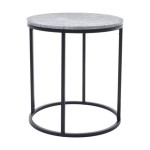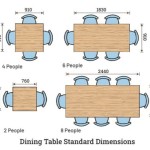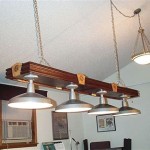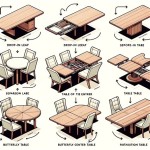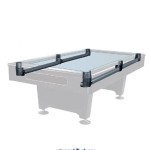Glass Lampshades for Table Lamps: A Comprehensive Guide
Glass lampshades are a popular choice for table lamps, offering a blend of aesthetic appeal, functional lighting, and versatility. They come in a wide range of styles, shapes, colors, and textures, allowing consumers to customize their lighting fixtures to suit their individual tastes and interior décor. Understanding the characteristics, benefits, and selection criteria of glass lampshades is crucial for making informed purchasing decisions.
The use of glass in lampshade construction has a long history, owing to its ability to diffuse light and create a warm, inviting ambiance. Different types of glass, such as clear, frosted, etched, and colored glass, each impart unique qualities to the light emitted from the lamp. The design and manufacturing processes also contribute significantly to the overall look and feel of the lampshade.
Key Point 1: Types of Glass Used in Lampshade Manufacturing
The type of glass used in a lampshade directly affects its appearance, durability, and light diffusion properties. Several common types of glass are used, each with its own distinct characteristics:
Clear Glass: Clear glass allows maximum light transmission, providing bright and unobstructed illumination. It is often used in lampshades where the bulb itself is meant to be showcased or where a clean, modern aesthetic is desired. However, clear glass can also produce glare, which may be undesirable in some settings. The clarity also means that imperfections in the bulb are more noticeable. Therefore, using decorative or aesthetically pleasing bulbs is often recommended with clear glass lampshades.
Frosted Glass: Frosted glass is created by etching or sandblasting the surface of clear glass, resulting in a translucent finish. This obscures the bulb and diffuses the light more evenly, reducing glare and creating a softer, more ambient glow. Frosted glass is a versatile option that can be used in a variety of settings and styles. Its diffusion properties are particularly useful in bedrooms or living rooms where a softer light is preferred. However, frosted glass may reduce the overall brightness of the light compared to clear glass.
Etched Glass: Etched glass involves creating intricate designs on the surface of the glass using acids or lasers. This allows for decorative patterns and textures, adding visual interest to the lampshade and the light it emits. Etched glass can range from subtle, delicate patterns to bold, intricate designs, depending on the desired aesthetic. The degree of light diffusion will depend on the density and depth of the etched pattern. More intricate and dense patterns will generally diffuse the light more effectively.
Colored Glass: Colored glass is created by adding metallic oxides to the glass mixture during manufacturing. This results in a wide range of colors, from subtle tints to deep, vibrant hues. Colored glass can be used to create a specific mood or atmosphere in a room, or to complement the existing décor. The intensity of the color will affect the amount of light transmitted. Darker colors will absorb more light, resulting in a dimmer, more subdued glow. Lighter colors will allow more light to pass through, creating a brighter illumination. Popular colors include amber, blue, green, and rose, each offering a unique aesthetic and effect.
Opal Glass: Opal glass is a type of translucent white glass that provides excellent light diffusion. It is often used in lampshades to create a soft, even glow without harsh shadows. Opal glass is particularly well-suited for task lighting, as it minimizes glare and provides comfortable illumination for reading or working. The density of the opal glass affects the amount of light diffused. Thicker opal glass provides greater diffusion and reduces glare more effectively. Opal glass is often found in vintage and antique lampshades, prized for its classic appeal and functional light diffusion.
Art Glass: Art glass encompasses a wide range of decorative glass techniques, including stained glass, blown glass, and fused glass. These techniques allow for the creation of unique and artistic lampshades that serve as both a lighting fixture and a decorative object. Art glass lampshades are often handcrafted and can be quite expensive, but they offer a distinctive and personalized touch to any room. The possibilities are virtually endless with art glass, allowing for an array of colors, textures, and designs. Due to their unique nature, art glass lampshades are often considered investment pieces, adding value and character to a space.
Key Point 2: Styles and Shapes of Glass Lampshades
The shape and style of a glass lampshade significantly impact its aesthetic and functional properties. Different shapes will distribute light in different ways, and the style should complement the overall design of the table lamp and the surrounding décor.
Bell-Shaped Lampshades: Bell-shaped lampshades are a classic and versatile option that complements a wide range of table lamp styles. The flared shape directs light downwards, making them suitable for reading or task lighting. They can be made from various types of glass and decorated with different patterns or textures. The gentle curve of the bell shape creates a soft, elegant look that works well in both traditional and contemporary settings. The width of the bell shape can also vary, affecting the amount of light spread. Wider bell shapes will distribute light more broadly, while narrower shapes will focus the light more directly.
Drum-Shaped Lampshades: Drum-shaped lampshades have a cylindrical or slightly tapered shape, providing a more contemporary and minimalist look. They distribute light evenly in all directions, creating a warm and ambient glow. Drum-shaped lampshades are often used in modern and transitional interiors. The clean lines and simple form of the drum shape make it a versatile choice that can be easily integrated into various design schemes. The height of the drum shade can also vary, affecting the amount of light emitted. Taller shades will provide more ambient light, while shorter shades will focus the light more downwards.
Globe-Shaped Lampshades: Globe-shaped lampshades are spherical or near-spherical in shape, providing a uniform and omnidirectional light distribution. They are often made from opal or frosted glass to create a soft and diffused glow. Globe-shaped lampshades are commonly used in mid-century modern or retro-inspired interiors. The round shape creates a sense of simplicity and elegance, and the even light distribution makes them ideal for creating a warm and inviting atmosphere. The size of the globe shade will affect the amount of light emitted. Larger globe shades will provide more ambient light, while smaller shades will focus the light more intensely.
Square or Rectangular Lampshades: Square or rectangular lampshades offer a more geometric and contemporary aesthetic. They provide a directional light distribution, casting light upwards and downwards while minimizing side spill. These shapes are often used in modern or minimalist interiors. The sharp lines and angles of square or rectangular shades create a bold and sophisticated look. The proportions of the shade, such as the height-to-width ratio, can also affect its visual impact. Taller, narrower shades will appear more elegant, while shorter, wider shades will appear more grounded.
Tiffany-Style Lampshades: Tiffany-style lampshades are made from pieces of colored glass carefully assembled to create intricate patterns and designs. They are known for their rich colors and artistic flair, often featuring floral or geometric motifs. Tiffany lampshades are typically used in traditional or art deco interiors. The vibrant colors and intricate details of Tiffany lampshades make them a statement piece in any room. The quality of the glass and the craftsmanship of the assembly are crucial factors in determining the value and longevity of Tiffany-style lampshades.
Empire-Shaped Lampshades: Empire-shaped lampshades have a conical shape with a wider base and a narrower top. They provide a balanced light distribution, casting light both upwards and downwards. Empire-shaped lampshades are a classic and timeless choice that works well with a variety of table lamp styles. The tapered shape of the empire shade creates a sense of elegance and sophistication. The angle of the taper can also vary, affecting the amount of light spread. Steeper tapers will focus the light more downwards, while gentler tapers will provide a wider distribution.
Key Point 3: Factors to Consider When Choosing a Glass Lampshade
Selecting the right glass lampshade for a table lamp involves considering several factors to ensure that the lampshade meets both aesthetic and functional requirements. These factors include size, shape, style, light output, and overall compatibility with the table lamp.
Size: The size of the lampshade should be proportional to the size of the table lamp. A general rule of thumb is that the lampshade should be approximately one-third the height of the lamp base. The diameter of the lampshade should also be wider than the widest part of the lamp base. Choosing a lampshade that is too small or too large can create an unbalanced and visually unappealing look. Proper sizing ensures that the lampshade effectively diffuses light and complements the overall design of the lamp.
Shape: The shape of the lampshade should complement the shape of the lamp base. For example, a round lamp base might pair well with a round or bell-shaped lampshade, while a square lamp base might look best with a square or rectangular lampshade. Mixing shapes can also create an interesting and eclectic look, but it should be done with careful consideration. The shape of the lampshade also affects the direction and distribution of light, so it's important to choose a shape that is appropriate for the intended use of the lamp.
Style: The style of the lampshade should match the overall style of the room. A sleek and modern lampshade might be a good choice for a contemporary interior, while a more ornate or decorative lampshade might be better suited for a traditional or vintage-inspired space. Consider the color, pattern, and texture of the lampshade to ensure that it complements the existing décor. A well-chosen lampshade can enhance the overall aesthetic of the room and create a cohesive and harmonious look.
Light Output: The type of glass used in the lampshade will affect the amount and quality of light emitted. Clear glass allows for maximum light transmission, while frosted or colored glass will diffuse the light and create a softer glow. Consider the intended use of the lamp and choose a lampshade that provides the appropriate level of illumination. For task lighting, a brighter light output may be preferred, while for ambient lighting, a softer and more diffused glow may be more desirable. The bulb used in the lamp will also affect the light output, so it's important to choose a bulb that is compatible with the lampshade and the intended use of the lamp.
Compatibility: Ensure that the lampshade is compatible with the table lamp's harp and finial. The harp is the metal frame that supports the lampshade, and the finial is the decorative knob that screws onto the top of the harp to secure the lampshade in place. The lampshade should fit securely on the harp and the finial should be able to tighten properly. Check the dimensions of the harp and finial to ensure that they are compatible with the lampshade. Some lampshades may require a different size harp or finial, so it's important to check the specifications before making a purchase.
Budget: The price of glass lampshades can vary widely, depending on the type of glass, the complexity of the design, and the craftsmanship involved. Set a budget before starting the shopping process and stick to it. There are many affordable options available, but it's important to balance price with quality and aesthetics. Consider the long-term value of the lampshade and choose a product that is durable and will last for many years. Investing in a high-quality lampshade can enhance the overall look and feel of the room and provide years of enjoyment.

Stained Glass Shade Lamp Bespoke

Glass Lamp Shades Mullan Lighting

Glass Lampshade Table Lamp Flower Lampshape E27 Bedroom Vintage Wh Ttb 63 China Ceramic Turkish Swan Lamps Made In Com

Table Lamp Glass Lampshape E27 Bedroom Lampshades For Lamps Wh Ttb 67 China Study Light Lights Made In Com

Small Lamp Shade Stained Glass Bedside Lamps Shades Nightstand

Building A Custom Stained Glass Lampshade Mold Works

Lumilamp Wholer In Lamp Shades B2b Conditions

White Glass Dome Shade Brass Lamp Vintage 1980s Bell Shaped

Table Lamp Flower Lily Design Glass Lampshade Iron Green Tall Shaped Handmade Lamps Com

Lumilamp Wholer In Lamp Shades B2b Conditions

